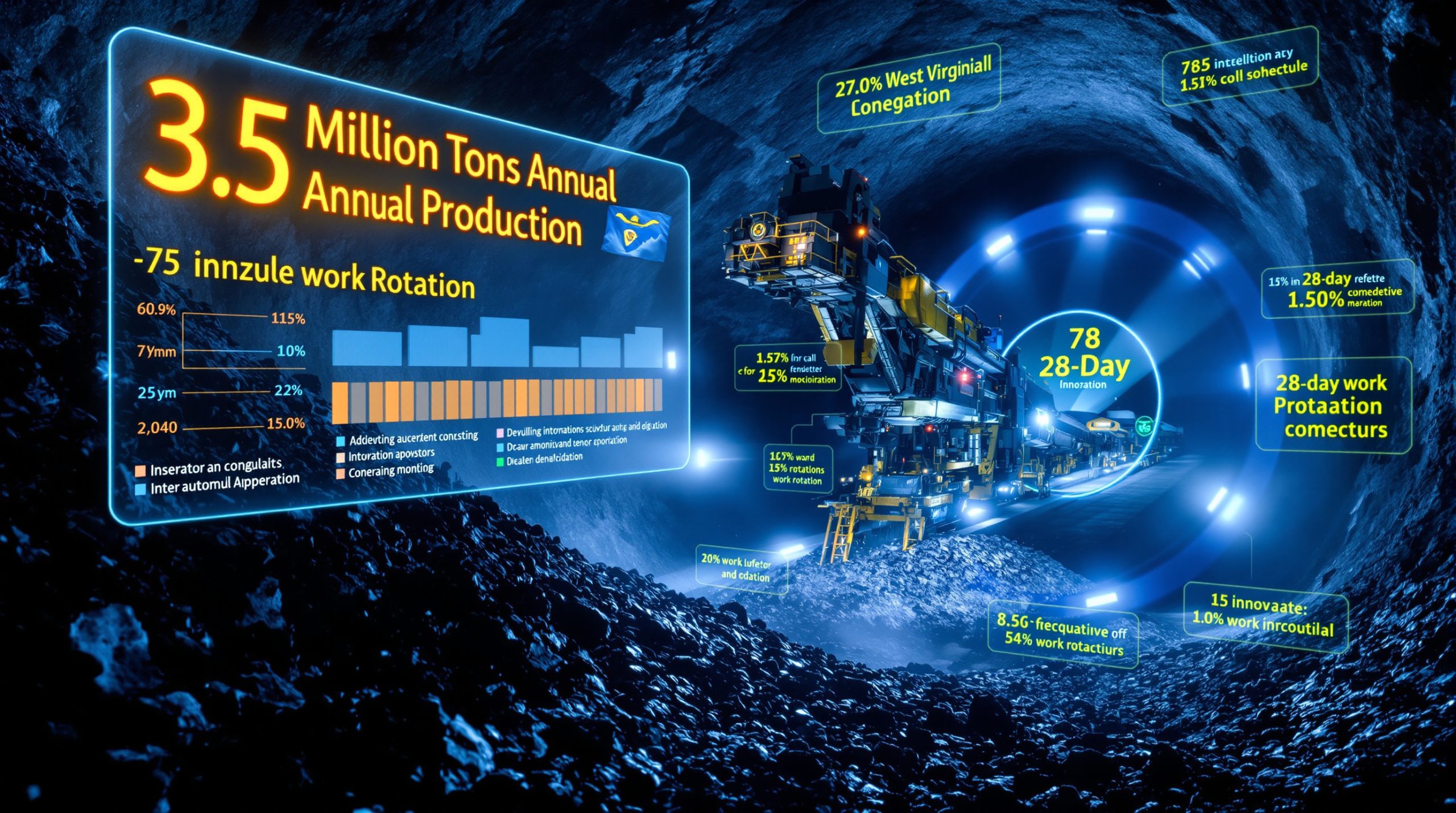What Are Vanadium Redox Flow Batteries and Why Does Manufacturing Location Matter?
Vanadium redox flow batteries represent a breakthrough technology for long-duration energy storage applications, utilizing vanadium ions in different oxidation states to store and release electrical energy over extended periods. The development of vanadium redox flow battery manufacturing in South Africa presents significant opportunities for the country to leverage its natural resource advantages in the growing global energy storage market. These systems excel in grid stabilisation and renewable energy integration scenarios where sustained power delivery is essential.
Manufacturing proximity to raw materials creates substantial economic advantages for VRFB production. When vanadium electrolyte represents a significant portion of system costs, countries with domestic vanadium resources can achieve meaningful cost reductions through integrated supply chains and reduced transportation expenses. Furthermore, recent mining industry innovation developments have made resource extraction more efficient and sustainable.
Key Technical Specifications of VRFBs
| Specification | VRFB Performance | Lithium-Ion Comparison |
|---|---|---|
| Cycle Life | 10,000-20,000 cycles | 3,000-6,000 cycles |
| Operational Lifespan | 25-30 years | 10-15 years |
| Depth of Discharge | 100% (no degradation) | 80-90% (to preserve life) |
| Response Time | <1 second | <1 second |
| Temperature Stability | Wide operating range | Narrow optimal range |
The technology demonstrates exceptional longevity compared to conventional battery systems. According to industry research, VRFBs achieve 10,000-20,000 cycles with operational lifespans extending 25-30 years, maintaining full performance even at 100% capacity utilisation without degradation concerns.
These systems utilise non-flammable electrolyte solutions that maintain thermal stability across wide temperature ranges, making them particularly suitable for challenging environmental conditions. The inherent safety characteristics eliminate fire risks associated with some competing technologies.
How Strong Is South Africa's Position in Global Vanadium Production?
South Africa possesses significant vanadium resources with many deposits containing grades exceeding 1.5% vanadium pentoxide, representing high-grade material by international standards. This geological advantage positions the country favourably for developing integrated vanadium value chains that support critical minerals energy transition objectives.
Current Global Vanadium Supply Dynamics
The global vanadium market produces approximately 100,000 tonnes annually, with China dominating production through slag-based processing from steel manufacturing. Chinese producers supply two-thirds of total global output, creating significant supply chain concentration risks.
Market Concentration Concerns:
• China controls approximately 67,000 tonnes of annual production
• Top eight vanadium electrolyte manufacturers based in China account for 93-95% of global capacity
• Regional diversification opportunities exist to mitigate supply vulnerabilities
• Alternative production centres could strengthen global supply security
Current vanadium consumption for VRFB applications represents only 5% of total global demand. However, industry projections indicate this share will surge to 27% by 2030, necessitating doubled global production capacity to meet anticipated battery storage requirements.
The concentrated nature of current production creates both opportunities and risks. While established manufacturers benefit from scale economies, regional diversification becomes increasingly important for supply chain resilience as VRFB demand accelerates. In addition, advances in battery recycling breakthrough technologies are transforming the entire value chain.
What Manufacturing Capabilities Already Exist in South Africa's VRFB Sector?
South Africa's vanadium resources are strategically located in regions like Mpumalanga province, which presents opportunities for industrial transition from coal-based economic activities toward clean energy technologies. This geographic alignment supports just energy transition initiatives while leveraging existing industrial infrastructure.
The country maintains established mining and initial processing capabilities for vanadium production, providing foundational elements for expanded downstream manufacturing. However, comprehensive VRFB system manufacturing requires additional investment in specialised facilities and technical capabilities. The potential for mineral beneficiation opportunities in this sector remains substantial.
Current Value Chain Elements
Primary Production Infrastructure:
• Multiple vanadium deposits with grades exceeding international benchmarks
• Existing mining operations and beneficiation facilities
• Transportation networks connecting resource regions to processing centres
• Skilled workforce familiar with vanadium handling and processing
Downstream Development Opportunities:
• Electrolyte production facility potential
• Component manufacturing capabilities for system integration
• Assembly operations for complete VRFB systems
• Quality control and testing infrastructure requirements
The transition from primary production to integrated manufacturing requires coordinated investment in specialised equipment, technical expertise, and quality assurance systems meeting international VRFB specifications.
Which Economic Factors Drive VRFB Manufacturing Competitiveness in South Africa?
Capital expenditure represents the primary barrier to VRFB manufacturing scaling. Industry analysis projects significant cost reductions from current levels of $380 per kWh in 2025 declining to $230 per kWh by 2030, approaching parity with lithium iron phosphate batteries for applications exceeding eight hours of storage duration.
Cost Reduction Trajectory Analysis
Manufacturers are implementing various strategies to achieve these cost improvements, including enhanced cell efficiency, manufacturing process optimisation, and supply chain integration. The projected cost parity by 2030 represents a critical milestone for VRFB market expansion.
Economic Competitiveness Factors:
• Raw material access advantages through domestic vanadium resources
• Potential manufacturing cost benefits from integrated supply chains
• Labour cost advantages compared to established manufacturing regions
• Government policy support for critical mineral beneficiation
The economic case for South African VRFB manufacturing strengthens as global demand accelerates and cost reduction targets materialise. However, decisive action is required to capture these opportunities before value migration to faster-moving competitors occurs.
Levelised cost of storage parity with lithium-ion technologies specifically applies to applications requiring extended discharge durations where VRFBs demonstrate superior performance characteristics compared to competing battery technologies. Furthermore, localising vanadium battery production offers significant strategic advantages for South Africa's energy security objectives.
How Do Policy Frameworks Support VRFB Manufacturing Development?
South Africa's recent policy alignment on critical minerals, including vanadium, creates supportive conditions for downstream industry development. The Renewable Energy Masterplan establishes clear pathways for localisation in renewable energy and storage value chains, directly supporting vanadium redox flow battery manufacturing in South Africa initiatives.
Strategic Policy Framework Requirements
Renewable Energy Integration:
The masterplan provides a comprehensive roadmap for converting mineral wealth into sustainable employment, export revenue, and technological capabilities. Vanadium beneficiation and VRFB manufacturing align directly with these national strategic objectives.
Multi-Layered Support Structure:
Establishing VRFB leadership requires targeted policy interventions beyond primary production, encompassing local manufacturing promotion, domestic demand stimulation, and export competitiveness enhancement.
Recommended Policy Interventions
Energy Storage Special Economic Zones:
• Dedicated battery technology production facilities
• Tax incentives and grants for VRFB component manufacturing
• Preferential procurement for locally produced systems
• Streamlined regulatory frameworks for technology development
International Precedents:
Multiple countries including China, India, Australia, and the United States have provided government support for VRFB research and development or production-linked incentives, demonstrating successful policy models for industry development.
The policy foundation exists for aggressive VRFB industry development, but implementation requires coordinated action across government levels and agencies to maximise manufacturing competitiveness and market capture opportunities.
What Are the Primary Technical Advantages of VRFBs for South African Applications?
VRFBs demonstrate unique technical characteristics particularly suited to long-duration energy storage applications. As renewable energy deployment accelerates, storage systems capable of grid stabilisation and extended energy storage become increasingly essential for maintaining electrical system reliability. Consequently, renewable energy mining solutions are increasingly incorporating VRFB technology.
Superior Performance Characteristics
The technology offers exceptional operational flexibility with no performance degradation even at 100% capacity utilisation. This capability enables intensive cycling without the capacity fade concerns associated with alternative battery technologies.
Key Technical Benefits:
• Thermal stability across wide operating temperature ranges
• Non-flammable electrolyte solutions eliminate fire risks
• Instantaneous response times for grid stabilisation applications
• Scalable design accommodating various storage duration requirements
Recyclability and Sustainability Advantages
The vanadium electrolyte achieves nearly 100% recovery rates from end-of-life systems, supporting circular business models and long-term cost stability. This recyclability advantage reduces total technology costs while supporting carbon emission reduction goals and climate change objectives.
The sustainable characteristics enhance competitiveness in energy landscapes increasingly focused on environmental impact and resource efficiency. Unlike technologies requiring continuous raw material inputs for replacement systems, VRFBs maintain material value through multiple lifecycle iterations.
Environmental Impact Benefits:
• Minimal toxic material content
• Reduced mining pressure through material reuse
• Lower carbon footprint through extended operational life
• Support for circular economy business models
Which Market Segments Present the Strongest Opportunities for South African VRFB Manufacturing?
Global installed VRFB capacity is projected to increase dramatically from 4 GWh to 40 GWh by 2030, representing tenfold growth over the five-year period. Installation acceleration is anticipated from 2027 onwards, creating substantial market opportunities for manufacturing capacity development.
Primary Application Areas
Utility-Scale Grid Storage:
Large-scale installations requiring 4-12 hour discharge durations for grid stabilisation, renewable energy integration, and load management applications represent the largest market segment opportunity.
Industrial and Commercial Applications:
Manufacturing facilities, mining operations, and commercial buildings requiring reliable backup power and energy cost optimisation benefit from VRFB technology characteristics.
Regional Export Opportunities:
Domestic and regional storage applications across Sub-Saharan Africa present accessible markets for South African manufacturers, particularly as renewable energy deployment accelerates throughout the continent.
Market Growth Drivers
The increasing share of vanadium consumption for VRFB applications from current 5% levels to projected 27% by 2030 indicates fundamental market transformation. This growth requires doubled global vanadium production, creating opportunities for integrated producers to capture value across the supply chain.
Strategic Market Positioning:
• Early market entry advantages for capacity building
• Regional hub development for African markets
• Export competitiveness through raw material integration
• Technology transfer opportunities with international partners
Industry experts note that South Africa is poised to capitalise on the global boom in vanadium redox flow batteries.
How Does VRFB Recyclability Impact Long-Term Manufacturing Economics?
The nearly 100% recoverable nature of vanadium electrolyte creates unique economic advantages distinguishing VRFBs from competing battery technologies. This recyclability supports circular business models while providing long-term cost stability for operators and manufacturers.
Circular Economy Benefits
Unlike conventional batteries experiencing material degradation through operational cycling, VRFB electrolyte maintains chemical properties indefinitely. This characteristic enables material reuse across multiple system lifecycles without performance compromise.
Economic Impact Advantages:
• Reduced raw material requirements for replacement systems
• Electrolyte leasing models reducing upfront capital investments
• Long-term price stability through material conservation
• Enhanced competitiveness through total cost optimisation
The recyclability advantage lowers total technology costs compared to alternatives while supporting carbon emission reduction and climate change objectives. These benefits enhance VRFB competitiveness in energy landscapes increasingly prioritising sustainability metrics alongside economic performance.
Manufacturing Economics
Manufacturers can develop business models incorporating electrolyte recovery and reprocessing, creating additional revenue streams while reducing customer lifecycle costs. This approach differentiates VRFB technology from competing solutions requiring continuous raw material consumption for replacement batteries.
Long-term Value Creation:
• Material recovery service revenue opportunities
• Reduced mining dependencies through reuse cycles
• Enhanced customer value propositions through lower lifecycle costs
• Sustainable competitive advantages through resource efficiency
What Infrastructure Development Is Required for Large-Scale VRFB Manufacturing?
Developing comprehensive vanadium redox flow battery manufacturing in South Africa capabilities requires coordinated infrastructure investment across multiple industrial sectors. Manufacturing facilities must accommodate specialised equipment for electrolyte production, component assembly, and system integration while maintaining quality standards meeting international specifications.
Critical Manufacturing Infrastructure
Production Facility Requirements:
• Clean environment capabilities for electrolyte processing
• Heavy equipment areas for large-scale system assembly
• Quality control laboratories with international certification capabilities
• Specialised storage facilities for vanadium materials handling
Supporting Infrastructure Needs:
• Reliable electrical grid connections for energy-intensive manufacturing
• Transportation networks accommodating oversized equipment movement
• Port facilities for international export capabilities
• Skilled workforce training and development programmes
Integrated Development Approach
Successful VRFB manufacturing requires integration between mining operations, processing facilities, and downstream assembly capabilities. This coordination maximises cost advantages while ensuring quality control throughout the production chain.
The infrastructure development timeline aligns with projected market acceleration from 2027 onwards, providing opportunity windows for strategic facility development and workforce preparation initiatives.
Which Global Partnerships Could Accelerate South African VRFB Manufacturing?
International collaboration opportunities span technology transfer, market access, and financing arrangements. Strategic partnerships can accelerate industry development by combining South African resource advantages with established international expertise and market access.
Technology Development Partnerships
Research and Development Collaboration:
• University partnerships for advanced VRFB technology development
• Technology licensing agreements with established manufacturers
• Joint ventures combining resource access with technical expertise
• International research institute collaboration programmes
Market Access Opportunities:
• Distribution partnerships for regional and international markets
• Project development collaboration for utility-scale installations
• Original equipment manufacturer relationships with renewable energy developers
• Export credit and financing facility development
Supply Chain Diversification
The concentrated nature of current global VRFB manufacturing, with top producers controlling 93-95% of capacity, creates opportunities for regional diversification. South African manufacturers can position themselves as alternative suppliers for customers seeking supply chain resilience.
Strategic Partnership Benefits:
• Technology transfer accelerating domestic capabilities
• Market entry support reducing development timelines
• Financial partnerships enabling scaled manufacturing investment
• Risk mitigation through diversified customer relationships
What Timeline Is Realistic for Establishing Competitive VRFB Manufacturing in South Africa?
Industry development requires phased implementation approach aligning with global market acceleration and cost reduction trajectories. The projected installation acceleration from 2027 onwards provides strategic timing for manufacturing capability development.
Development Phase Strategy
Phase 1 (2025-2027): Foundation Development
• Establish electrolyte production capabilities
• Develop initial component manufacturing systems
• Create assembly operations for smaller scale installations
• Build technical workforce and quality assurance capabilities
Phase 2 (2027-2030): Market Scaling
• Expand to utility-scale system manufacturing
• Develop export market capabilities and partnerships
• Integrate full value chain operations from mining to assembly
• Achieve cost competitiveness with international manufacturers
Critical Success Factors
The timeline aligns with projected VRFB cost parity with lithium-ion technologies by 2030, creating market opportunities for competitive South African manufacturers. However, decisive action is required to prevent value migration to faster-moving international competitors.
Implementation Requirements:
• Coordinated policy support across government levels
• Private sector investment in manufacturing capabilities
• International partnership development for technology and market access
• Workforce development programmes for specialised technical skills
Success depends on creating integrated value chains capturing advantages from domestic vanadium resources while developing competitive manufacturing capabilities meeting international quality and cost standards. The window for establishing vanadium redox flow battery manufacturing in South Africa leadership requires immediate coordinated action across public and private sectors.
Disclaimer: This analysis is based on industry projections and market research available as of 2025. Actual market development, cost reduction timelines, and competitive dynamics may vary based on technological developments, policy changes, and global economic conditions. Investment decisions should consider comprehensive due diligence and professional advisory services.
Looking to Capitalise on Critical Minerals Manufacturing Opportunities?
Discovery Alert's proprietary Discovery IQ model delivers real-time alerts on significant vanadium and critical minerals discoveries across the ASX, instantly empowering subscribers to identify actionable opportunities ahead of the broader market. Understand why major mineral discoveries can generate substantial returns by exploring historic examples, then begin your 30-day free trial today to position yourself ahead of the market.




